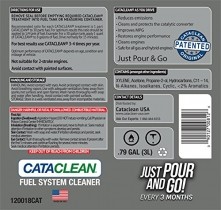Experiencing a P0430 code on your Toyota Tacoma can be frustrating. This trouble code, indicated by your OBD-II scanner, signals an issue within your vehicle’s catalytic converter system, specifically noting that the Catalyst System Efficiency is Below Threshold (Bank 2). Let’s delve into what this code means, potential causes, and how to troubleshoot and fix it, drawing from real-world experiences to guide you.
The P0430 code essentially tells you that your catalytic converter, responsible for reducing harmful emissions, isn’t working as efficiently as it should. Bank 2 refers to the side of the engine where cylinder number two is located; on a V6 Tacoma, this is typically the driver’s side. While a P0430 code doesn’t necessarily mean your catalytic converter has completely failed, it does indicate a problem that needs attention to ensure your Tacoma runs cleanly and efficiently.
Common culprits behind a P0430 code on a Toyota Tacoma include:
- Faulty Catalytic Converter: The most direct cause is often a degradation of the catalytic converter itself. Over time, converters can become less effective due to age, overheating, or contamination.
- Oxygen (O2) Sensor Issues: Your Tacoma uses upstream and downstream O2 sensors to monitor the catalytic converter’s performance. If the downstream sensor is failing or providing incorrect readings, it can trigger a P0430 code even if the converter is functioning adequately.
- Exhaust Leaks: Leaks in the exhaust system, especially before the catalytic converter or around the O2 sensors, can disrupt the readings and lead to a P0430 error.
- Engine Performance Problems: Issues like misfires, running rich or lean fuel mixtures, or vacuum leaks can overload the catalytic converter and reduce its efficiency, eventually triggering the code.
- Fuel Contamination or Poor Fuel Quality: As highlighted in a user experience, even using regular gas from a different source like Costco, especially during humid conditions and extended idling, can potentially contribute to a P0430 code. This might be due to fuel quality variations or additives affecting combustion and emissions.
One Toyota Tacoma owner faced this very issue after using regular gas. Initially, after receiving the P0430 code, they took a step to reset the system using an OBD scanner. This is a good first step to see if the code returns, especially if you suspect a temporary issue.
Following the reset, they opted for a fuel system cleaner, Cataclean, a popular product designed to clean fuel and exhaust systems, including catalytic converters. While the user reported that the truck “felt” better after using Cataclean, the P0430 code unfortunately reappeared after a few drive cycles, indicating the cleaner alone wasn’t a permanent fix in this case.
Seeking a more direct solution, the owner then decided to install an O2 sensor non-fouler on the downstream O2 sensor of the driver’s side catalytic converter. An O2 sensor non-fouler is a small adapter that moves the O2 sensor slightly out of the exhaust stream. This can sometimes “trick” the sensor into reading lower emissions levels, effectively suppressing the P0430 code.
During the O2 sensor removal and non-fouler installation, using a specialized O2 sensor socket is highly recommended to avoid damaging the sensor. Applying copper anti-seize to the sensor threads upon reinstallation is also a good practice to prevent future corrosion and ease removal if needed.
Interestingly, after installing the non-fouler, the P0430 code did not return, even after extensive driving. Furthermore, the Tacoma owner reported a noticeable improvement in gas mileage, increasing from around 16 MPG to 18 MPG in city driving. While the non-fouler effectively addressed the P0430 code in this situation, it’s crucial to understand that this is often considered a workaround, not a true fix. It masks the symptom (the code) but doesn’t necessarily repair the underlying issue with the catalytic converter’s efficiency.
While the user in this case experienced improved MPG, the exact reason for this improvement after installing a non-fouler is debatable. It’s possible that slightly altering the O2 sensor reading might have influenced the engine’s fuel management system, leading to a minor optimization. However, it’s more likely that other factors, perhaps coinciding with the repairs, contributed to this observed change in fuel economy.
Troubleshooting P0430 on Your Toyota Tacoma:
- OBD-II Scan: Confirm the P0430 code and check for any other related codes.
- Inspect Exhaust System: Look for any visible leaks, cracks, or damage, especially around the catalytic converter and O2 sensors.
- Check O2 Sensors: Test the functionality of both upstream and downstream O2 sensors on Bank 2. Multimeters or scan tools with live data capabilities can be used for this.
- Consider Fuel Quality: If the code appeared after a fill-up, poor fuel quality could be a factor.
- Catalytic Converter Test: A professional mechanic can perform more in-depth tests to assess the catalytic converter’s efficiency.
Possible Solutions:
- O2 Sensor Replacement: If faulty O2 sensors are identified, replacing them is a straightforward fix.
- Exhaust Leak Repair: Address any exhaust leaks promptly.
- Catalytic Converter Replacement: If the catalytic converter is indeed failing, replacement is the most permanent solution. This is also the most expensive option.
- Non-Fouler (Use with Caution): While it might suppress the code, be aware that it may not address the root cause and could have implications for emissions testing and compliance depending on your location.
Conclusion:
The P0430 code on a Toyota Tacoma indicates a reduction in catalytic converter efficiency. While temporary fixes like O2 sensor non-foulers might mask the code and offer short-term relief, a thorough diagnosis is essential to identify the underlying cause. Addressing issues like faulty O2 sensors, exhaust leaks, or engine performance problems can often resolve the P0430 code. In cases of a truly failing catalytic converter, replacement might be necessary to ensure your Tacoma runs optimally and meets emissions standards. Remember to consult with a qualified mechanic for proper diagnosis and repair, especially when dealing with emission control systems.
